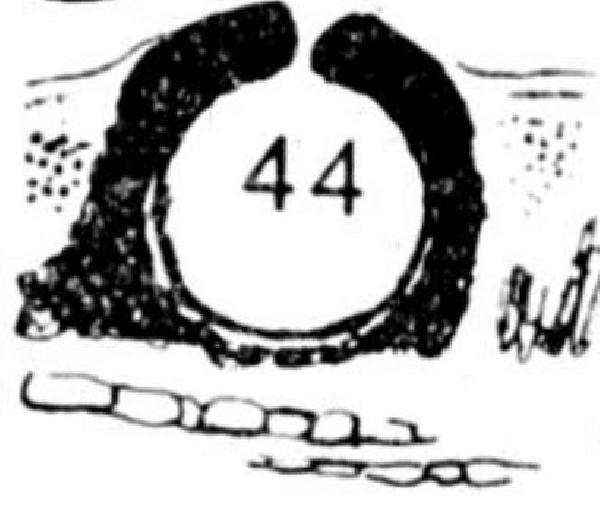Verrucaria endocarpoides Servít
Preslia, 24: 357-358, 1952.
Synonyms:
Distribution: N - Frl (Breuss 2008, 2008b), Lig. C- Tosc (Ravera & al. 2023), Marc (Ravera & al. 2023).
Description: Thallus crustose, episubstratic, rimose-areolate, 0.15-0.25 mm thick, usually delimited by a thin black prothallus, the areoles pale ochre-coloured to dark brown, dull to slightly shiny, 0.2-0.7 mm wide, polygonal, sometimes subdivided into smaller units, with wavy margins, separated by thin fissures. Cortex 10-25(-30) μm thick, rarely overlain by a very thin epinecral layer; algal layer 60-200 μm thick; medulla white to brownish at the base, without a black basal layer. Perithecia black, numerous, c. 120-180/cm², 1-2 per areole, completely or 2/3 immersed, the apical part flat to convex, c. 0.25 mm across. Involucrellum reaching down at least ⅔ of the perithecium, adpressed to exciple, 40-60 μm thick in upper part, 80-100 μm thick in lower part; exciple 0.25-0.30 mm across, the wall 15-20 μm thick, pale to dark brown, K+ olive-green; hamathecium of mostly simple periphyses and periphysoids measuring 20-30(-40) x c. 3 μm, interascal filaments absent; hymenial gel hemiamyloid, I+ red (I+ blue at very low concentrations of I), K/I+ blue. Asci 8-spored, clavate, I-, fissitunicate, the wall thickened above, with an ocular chamber, dehiscent by extrusion of an endotunica to form a delicate rostrum, Verrucaria-type; Ascospores 1-celled, hyaline, ellipsoid, (18-)20-26 x 8-11 μm. Photobiont chlorococcoid. Spot tests: K-, C-, KC-, P-, UV-. Chemistry: without lichen substances.Note: a poorly known, but apparently widespread taxon belonging to a group of species with a thick, brown, areolate thallus, which still needs revision. It has been reported from Italy, Austria, Slovakia and North America (see Breuss 2008).
Growth form: Crustose
Substrata: rocks
Photobiont: green algae other than Trentepohlia
Reproductive strategy: mainly sexual
Poorly known taxon in need of further study
Commonnes-rarity: (info)
Alpine belt: absent
Subalpine belt: absent
Oromediterranean belt: absent
Montane belt: extremely rare
Submediterranean belt: very rare
Padanian area: absent
Humid submediterranean belt: absent
Humid mediterranean belt: absent
Dry mediterranean belt: absent

Predictive model
Herbarium samples
Growth form: Crustose
Substrata: rocks
Photobiont: green algae other than Trentepohlia
Reproductive strategy: mainly sexual
Poorly known taxon in need of further study
Commonnes-rarity: (info)
Alpine belt: absent
Subalpine belt: absent
Oromediterranean belt: absent
Montane belt: extremely rare
Submediterranean belt: very rare
Padanian area: absent
Humid submediterranean belt: absent
Humid mediterranean belt: absent
Dry mediterranean belt: absent

Predictive model
| Herbarium samples |
 Index Fungorum
Index Fungorum
 GBIF
GBIF


